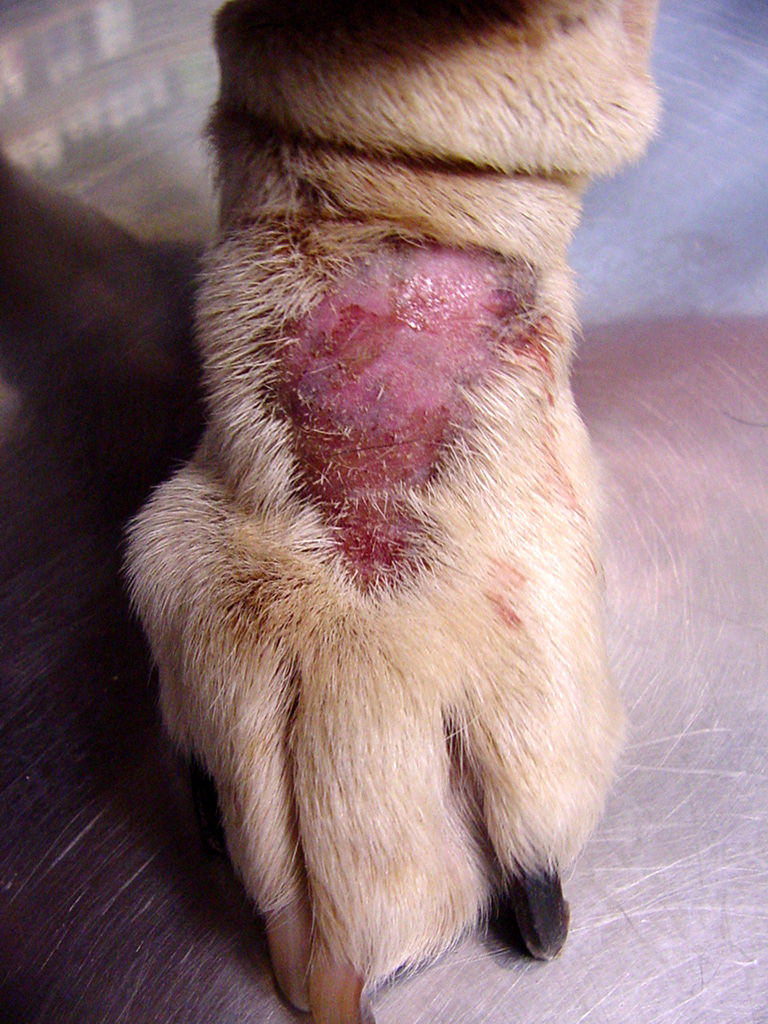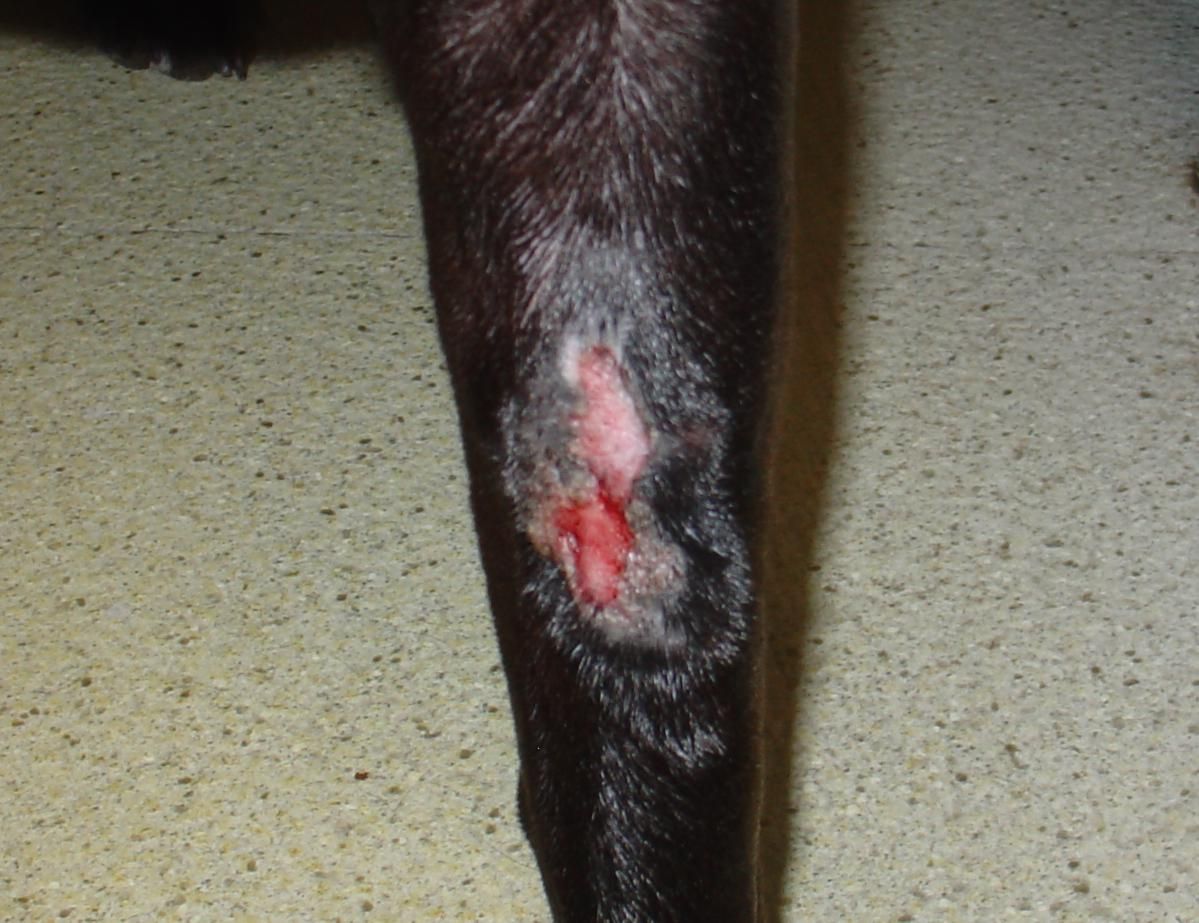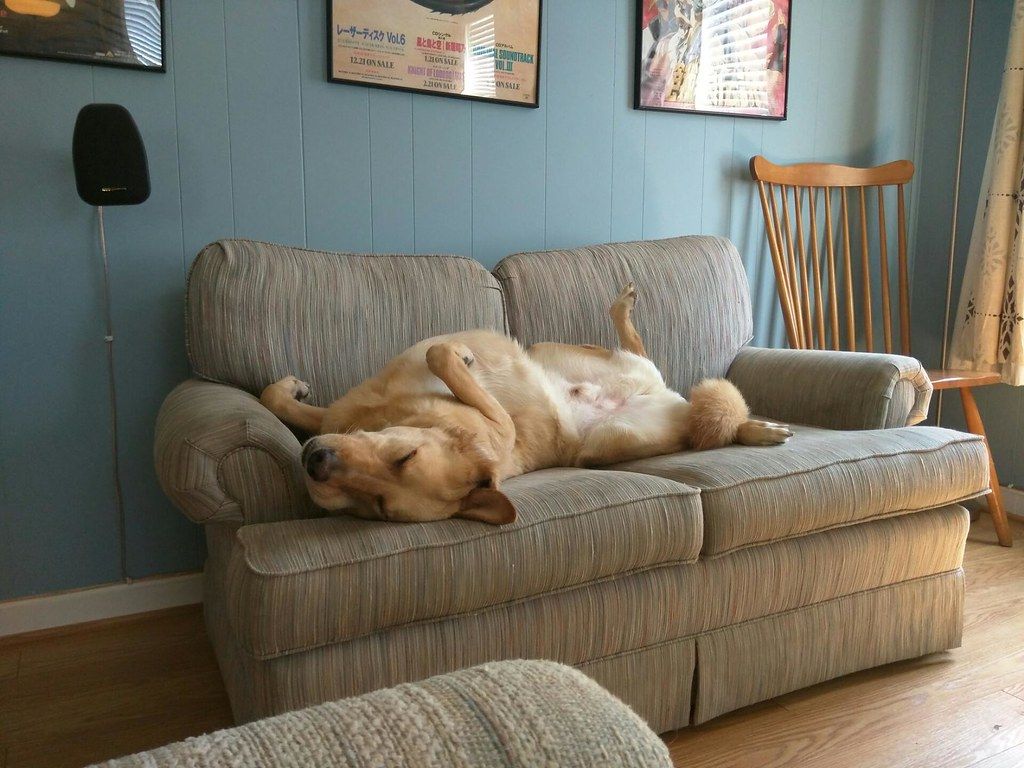The Lick Granuloma Story:

One minute everything looks fine and the next your pets paw is red, oozing pus, and angrily inflamed. How did you not notice this? There’s a huge red lesion (a lick granuloma) on the foot that appears to have come out of nowhere, which is impossible-right?
You are not alone in this. Just the other day I noticed my own dog paying a little bit more attention to one paw than he normally does. The next morning when we got up for breakfast, the paw was twice the size and redder than a cherry tomato. After my moment(s) of panic, I realized this is something I could handle on my own.
Excessive paw licking can come from any number of sources:
- Bug bites
- Cysts
- Trauma to the area
- Post-surgical areas
- Neuropathy
- Arthritis
- Pain
- Itchiness
- Nerve impingements
- Referred pain
- Obsessive compulsive disorder
The list is not exclusive and there are several more, however, these tend to be the major issues leading to a lick granuloma. 
Our first thoughts when seeing a big scary red lesion on our pet’s feet is usually panic. What happened and what can I do? Well there are a few options. If this is something new and uncommon for your pet, I would recommend attempting some alternative therapies to see if you can help the granuloma go down on its own. If you think about it, the granuloma is a symptom of something else going on. No animal is born with an inherent need to lick his or her paw, so finding what the root of the problem is can help cure it rather than offer a temporary band-aid.
Mowgli’s Incident
In my own pet’s case, my first thought was to adjust him. He had spent a day at doggy daycare and played like a madman, something that could easily cause his spine to shift and in turn lead to an impingement or neuropathy. After giving him a once over and finding he was in fact fixated at the base of his neck and between his shoulder blades, I then began doing some things topically to help release some of the superficial inflammation. 
We did a nice soak in some water that had been brewed with plantain (a great plant that is wonderful at drawing out infection). We did this three times in the first 12 hours for ten minutes a pop. Even after that first soak the swelling went down, the redness decreased, and he began paying less attention to the paw. He was also given a topical essential oil blend that had myrrh, roman chamomile, and copaiba. This dissuaded him from licking while also offering healing properties.
24 hours later and my pooch’s paw was about 65% better. Two days after that and we are almost back to 100%. Now at the time I was getting a great deal of pressure to rush him to the conventional veterinarian, which I would have absolutely done had the paw continued to worsen. In my gut I knew that his body was trying to detoxify and this was his canvas, and though it looked terrible, I’d rather have the toxins come out than be harbored internally.
Cause vs. Effect
Each animal will be different when it comes to treating a lick granuloma. My advice would be to try and figure out what is the CAUSE of the licking. In Mowgli’s case, it was likely a combination of a nerve impingement and a bug bite. Addressing the nervous system through chiropractic and the bug bite through homeopathy, we were able to get things under control and healed up within four days. 
For those animals that do this on a regular basis, getting them checking chiropractically is a great place to start. If the source is pain, arthritis, itchiness, nerve impingement, or neuropathy, these can all benefit from chiropractic adjustments. The above are more or less secondary conditions to a structural shift in the body. When we address the shift through chiropractic, these conditions should improve, and as they improve the lick granuloma should as well!
If you have questions, concerns, or would just like more information feel free to contact us at (248) 602-0807, or email us at advancedanimalchiropractic@gmail.com!

